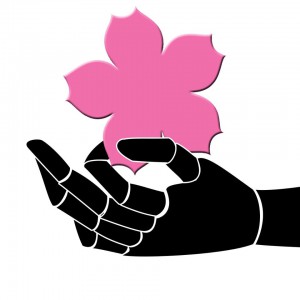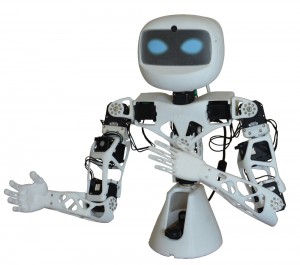DEFI H SERIES (PART 4): HOSPITALIZED CHILDREN TO FIND A NEW FRIEND IN U0026QUOT;CHERRYU0026QUOT;
June 10, 2015
 In the fourth article of the series, we discuss how Cherry, a small humanoid robot – developed by the team that won the Public Award at the Defi H Competition – will help hospitalized children break social isolation and stay engaged in fun activities.
In the fourth article of the series, we discuss how Cherry, a small humanoid robot – developed by the team that won the Public Award at the Defi H Competition – will help hospitalized children break social isolation and stay engaged in fun activities.
The motivation
“What is feared, above all, when children arrive at the hospital is isolation. For them, this is a moment when the bond with family and schoolmates can be broken. It could bring about a mental dropout and this is an extremely tough moment, which could lead to a high level of stress” said Professor Claire Majoufre, a surgeon at the CHU of Bordeaux.more–>
More about Cherry
The team aims to demonstrate the abilities of Cherry in breaking social isolation for hospitalized children. In the long run, this robot would be able to talk to children, suggest games or exercises and help them communicate with their parents, friends and schoolmates. To sum up, it would act like a roommate for kids that would be both useful and fun to be with!
Cherry is envisioned to perform the following tasks in the future:
1) Relay medical messages
2) Break isolation with its presence
3) Provide school monitoring
4) Encourage communication with the environment
5) Ease communication with the outside world
The different phases
The scale of the task led the team to divide the work into ‘deliverables,’ each one lasting a few weeks. For each due date, the robot had to comply with a functional scenario. This approach made the measurement of progress easier and allowed the team to not lose sight of their goals. Thus, the team was able to save time by focusing on the main functionalities of the robot; and get organized with monthly deliverables, where there were weekly goals to accomplish in each month.
Problems and solutions
Few problems were encountered due to incompatibilities between the new pieces and the old ones: the skeleton of Poppy is different from its first version and Robotis had slightly changed the form of some of its engines. The team was at times forced to ‘reshape’ some plastic pieces. They even had to craft a backup base. Once the torso was finished, the team noticed that the base was too small; its integrated sucker worked and kept the base vertical, but the movements of the arms were hindered by the table. So, they raised it so that Cherry could move freely. No pieces of the onboard system of Cherry have been supplied to the team. They ordered the required components from the robotics retailer Génération Robot. The school ENSEIRB-MATMECA agreed to fund these purchases and allowed the team to continue with their project.
Looking ahead
The Cherry Project started with the Défi H, but it is an ambitious and long-term project. Therefore, it would need more time to achieve its goal. Cherry participated and will keep participating in several robotic events. Its event calendar is already packed until 2016.
Congratulations to the team!
School: ENSEIRB-MATMECA Bordeaux
– Sophie Bulteau
– Jean Dupuy
– Laura Khoudeir
– Thomas Le Lepvrier-Cussol
NGO: PRIM@
Sogeti Coach: Maximilien Oberlis

 English | EN
English | EN 